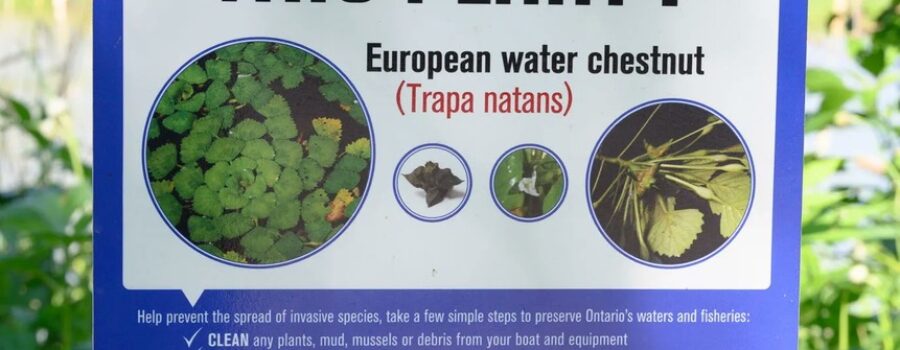Recreational paddlers are encouraged to ‘Paddle with a Purpose’ this year in waterways across Niagara.
Join the Invasive Species Centre and the NPCA at one of two Paddling Tours to learn how to identify and report EWC observations. Any additional observations will be managed as funding allows. Additional observations ensure that the population will be fully contained. No observations suggest that EWC is only in the Welland River.
The program is offering two paddling tours this year. Both events will launch from EC Brown public boat launch (River Rd., Fenwick, Pelham, L0S 1C0; see map location here). Paddlers will head west toward Wellandport for ~1.5 km to find the first known population of EWC.
- July 7, 2023, from 10 a.m. – 12:30 p.m. Register here.
- July 22, 2023, from 9 a.m. – 11:30 a.m. Register here.
- If you have any questions, please email kchurch@invasivespeciescentre.
ca
European Water Chestnut (EWC) (Trapas natans) is an aggressive invasive aquatic plant that has been detected in the Welland River. The Invasive Species Centre (ISC) is leading a Rapid Response Program to remove EWC from the Welland River with support from the Ontario Federation of Anglers and Hunters (OFAH) and the Niagara Peninsula Conservation Authority (NPCA).
Support the Field Team
The OFAH Hit Squad Field Team will be on the Welland River removing EWC from June 27 – Sept. 2. They will be using canoes and one small motorboat. Riverfront landowners are encouraged to support the field team in the following ways:
- Provide river access for canoes and/or a small boat on a trailer
- Provide emergency exits/shelter in case of inclement weather or health emergency
- Offer remote locations for biomass disposal to reduce travel time to Conservation Areas
- Provide a place for off-river health breaks
If you think you can help the team – please contact the program coordinator Katie Church (kchurch@
More Ways to Prevent Invasive Species
Clean, Drain, Dry!
The most important way you can help reduce the spread of aquatic invasive species is to ensure that your boat is decontaminated between EVERY waterway you access. As of January 2022, it is now the law in Ontario to take reasonable measures to clean, drain, and dry your watercraft and equipment. EWC can be spread through contaminated boats.
Step 1: Clean your boat from top to bottom by removing debris including plants and mud and wiping it down. Rinsing with hot or pressurized water is an additional precaution that will further prevent aquatic invasive species spread when feasible.
Step 2: Drain all water from your boat by opening and removing all drain plugs and ensuring there is no water left in the seating area or any other compartments.
Step 3: Dry your boat from top to bottom with a towel. Leaving your boat to dry in the sun will help reduce the chance of moving AIS between waterbodies.
Don’t Let It Loose!
EWC was an ornamental species that was likely released into the water by intentional or unintentional means. Aquatic invasive species can be spread when people release them directly into waterways, or they escape through water gardens that are connected to other bodies of water.
Most garden species can be placed in garbage bags and placed in the sun for several days to dry out and prevent possible germination. Be sure to properly dispose of invasive plants as waste and far from bodies of water.




















